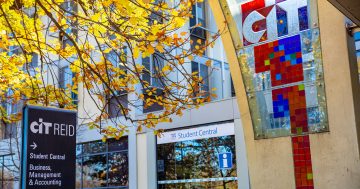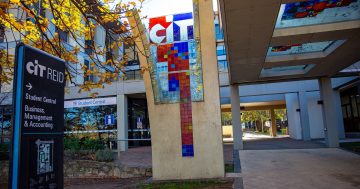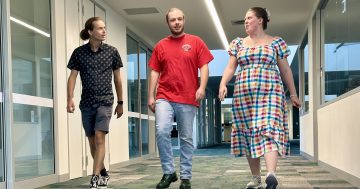
The union says it’s well-known that teachers’ workloads continue to increase. Photo: File.
Increasing pressure on teachers due to blown-out workloads could be partly due to a guidelines gap: no one knows exactly what teachers ‘should’ be doing when they are not in the classroom, the teachers’ union told a committee inquiry yesterday (29 March).
Australian Education Union ACT branch secretary Patrick Judge said “teachers end up doing far too much” when they are not in front of a classroom because there aren’t defined boundaries around what those hours should be used for.
Primary school teachers are required to spend 21 hours a week in the classroom while high-school teachers must spend at least 19 hours, Mr Judge told an inquiry into teaching quality in public schools today.
“That still leaves the rest of the 36.75 hours teachers are paid for,” Mr Judge said.
Canberra Liberals MLA Nicole Lawder questioned whether teachers’ workload pressure had increased over the years, and Mr Judge agreed with this assessment.
He noted that there wasn’t a clear demarcation around what teachers should be doing at this time, which meant everything was treated with the same level of priority when that shouldn’t be the case.
It was Mr Judge’s view that this out-of-classroom time should be used for planning and preparation for lessons and working with their colleagues, the wider school community and parents.
“Those sorts of things are what our members tell us they want to be doing; instead, a lot of the time they are doing administrative tasks or they are following up on a range of other tasks,” Mr Judge explained.
The Assembly’s standing committee on Education and Community Inclusion is currently inquiring into an ACT Auditor-General’s report on teaching quality in ACT public schools.
It’s well known that the ACT, along with the entire country, is suffering a teacher shortage.
The union’s submission to the inquiry predicts this shortage will worsen in the coming years because not only are there not enough teachers now, there aren’t enough coming through the ‘pipeline’ either.
Mr Judge said COVID-19 has exacerbated the teacher shortage, but even before then, schools found it difficult to get teachers into classrooms to give staff release time for professional development.
Sometimes, the union has to cancel professional development because teachers could not attend.
“It is the lived experience of our members. We continue to receive reports of there being insufficient staff to replace teachers who are absent, of classes having to be split and collapsed, of single teachers dealing with 50 or 60 students at a time,” he said.
Mr Judge said it’s simply impossible to have “quality teaching” to this number of students if the current workload pressure on schools and teachers continues to grow.
This includes the reality that schools and staff are asked to deliver a broader range of services than education alone.
The Auditor-General’s report found resignations had accounted for 67 per cent of teacher separations between 2014 and 2020 and that the majority of staff leave in the first seven years of service, “which is before they become highly effective teachers”.
It concluded that the Education Directorate would be unable to maintain teaching quality if enough staff cannot be recruited to cover staff turnover and predicted student growth.
Mr Judge said the union is concerned about a lack of planning related to where staff will be needed in the future. He said there are projections for enrolments, but it was a “mystery” why the same could not be provided for teachers.
“We can’t have this conversation … because we don’t know … that information is not available to us,” he said.
The ACT Government set up a teacher shortage task force six months ago, which Mr Judge said had run into “challenges” around a lack of available data and the task force’s inability to address some issues – like teacher pay – which did not sit within its remit.





















